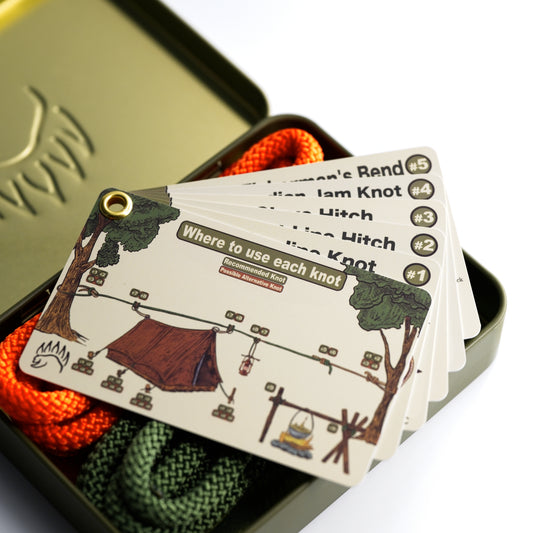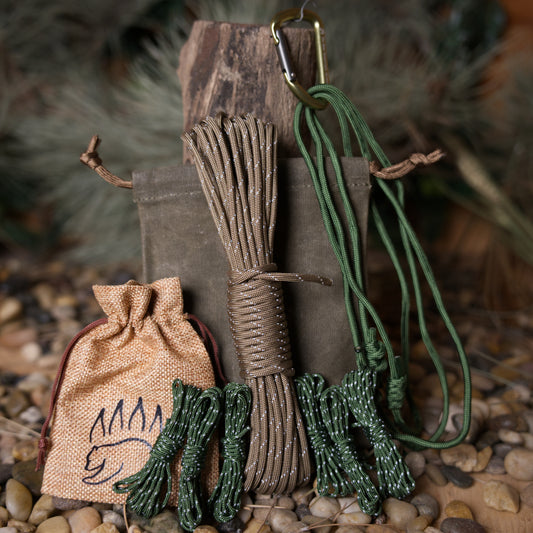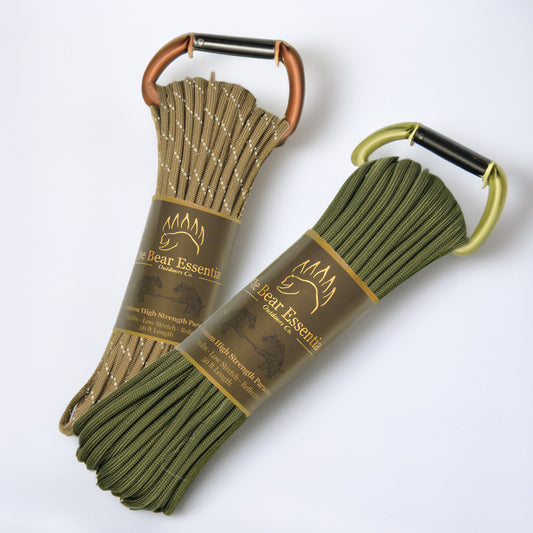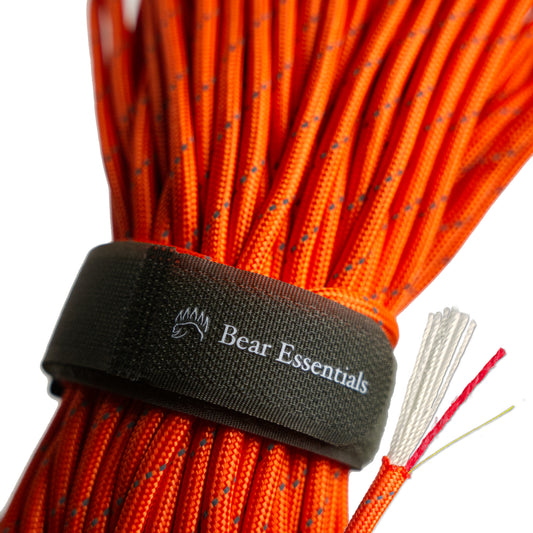How to Tie the Bowstring Knot
Usage
The Bowstring Knot is commonly used to create a fixed loop for attaching a bowstring to a bow in archery or bushcraft tool-making. Compared to other loop knots like the Bowline, it’s simpler and holds tension well, making it ideal for traditional archery setups. Its compact design is valued, but it can jam under prolonged strain.
Why Learn the Bowstring Knot?
Its straightforward loop ensures reliable tension. This knot is a must for bushcrafters crafting traditional archery gear.
Common Uses
-
Bushcraft:
- Attaches bowstrings to traditional bows for hunting or practice.
- Secures tight loops for crafting traps or tools.
-
Utility:
- Creates fixed loops for binding or securing small objects.
- Ties ropes for temporary, tensioned attachments.
ABOK Number
149
Other Names
None listed
Type
Binding Knots
Notable Features
- Simple to Tie: Forms a fixed loop quickly with minimal steps.
- Secure Hold: Maintains tension without slipping under strain.
- Compact Design: Creates a small, neat loop for bowstrings.
- Versatile Use: Suits archery, tool-making, or utility binding.
- Traditional Skill: Essential for handcrafted bows in bushcraft.
Variations
No true variations listed in the provided data. For added security, you can add an extra wrap around the standing line, though this may increase bulk.
Similar Knots
Bowline vs. Bowstring Knot
- Pros: Stronger and easier to untie after heavy loads.
- Cons: More complex and bulkier than the Bowstring Knot.
Perfection Loop vs. Bowstring Knot
- Pros: Tighter loop and more streamlined for fishing or fixed loops.
- Cons: Harder to tie and less suited for high-tension bowstrings.
History
The Bowstring Knot, referenced in The Ashley Book of Knots (#149), likely originated in ancient archery practices where secure, fixed loops were needed to attach bowstrings. Its simplicity made it a staple in traditional bow-making, particularly in bushcraft and survival contexts. While less common in modern archery due to synthetic fittings, it remains a valuable skill for handcrafted tools.
Security Level
The Bowstring Knot provides reliable tension for light to moderate loads when tied correctly, securely holding bowstrings or small bindings. It performs best with strong, low-stretch cords. For heavy or dynamic loads, a more robust knot like the Bowline may be needed to ensure stability.
Downsides
- Jamming risk: Can tighten and be hard to untie after prolonged strain.
- Limited modern use: Less relevant in archery due to specialized fittings.
Structure
- Form a small loop near the end of the rope, leaving a short tag end.
- Pass the tag end through the loop, creating a slip knot structure.
- Wrap the tag end around the standing line and back through the loop.
- Pull the standing line and tag end to tighten, forming a fixed loop.
- Test the loop to ensure it holds tension without slipping.
Pro Tip: Keep the initial loop small to create a compact, secure knot. Use a strong, low-stretch cord like Dacron for bowstrings. Practice tightening to avoid jamming, especially with thick ropes.
FAQ
Is the Bowstring Knot strong enough for archery?
Yes, it’s reliable for traditional bows, but test with strong cord for hunting.
What’s the best cord for the Bowstring Knot?
Dacron or low-stretch natural fibers like hemp work well for bowstrings.
How does the Bowstring Knot compare to the Bowline?
The Bowstring is simpler but jams more, while the Bowline is stronger and easier to untie.
Can the Bowstring Knot be used outside of archery?
Yes, it’s useful for fixed loops in bushcraft tools or utility binding.
Why choose the Bowstring Knot over a Perfection Loop?
It’s quicker and better for high-tension bowstrings, though less streamlined.
Important Notes on Safety
Common failure points include a loose loop or using weak cord, which can cause slipping. Always verify the knot is tight and the cord is suitable before use. Check the cord for wear or fraying before tying. Ensure the loop is snug to maintain tension. Practice in low-stakes settings to master the technique.







